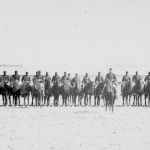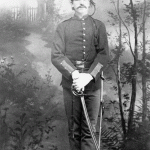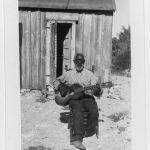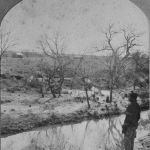
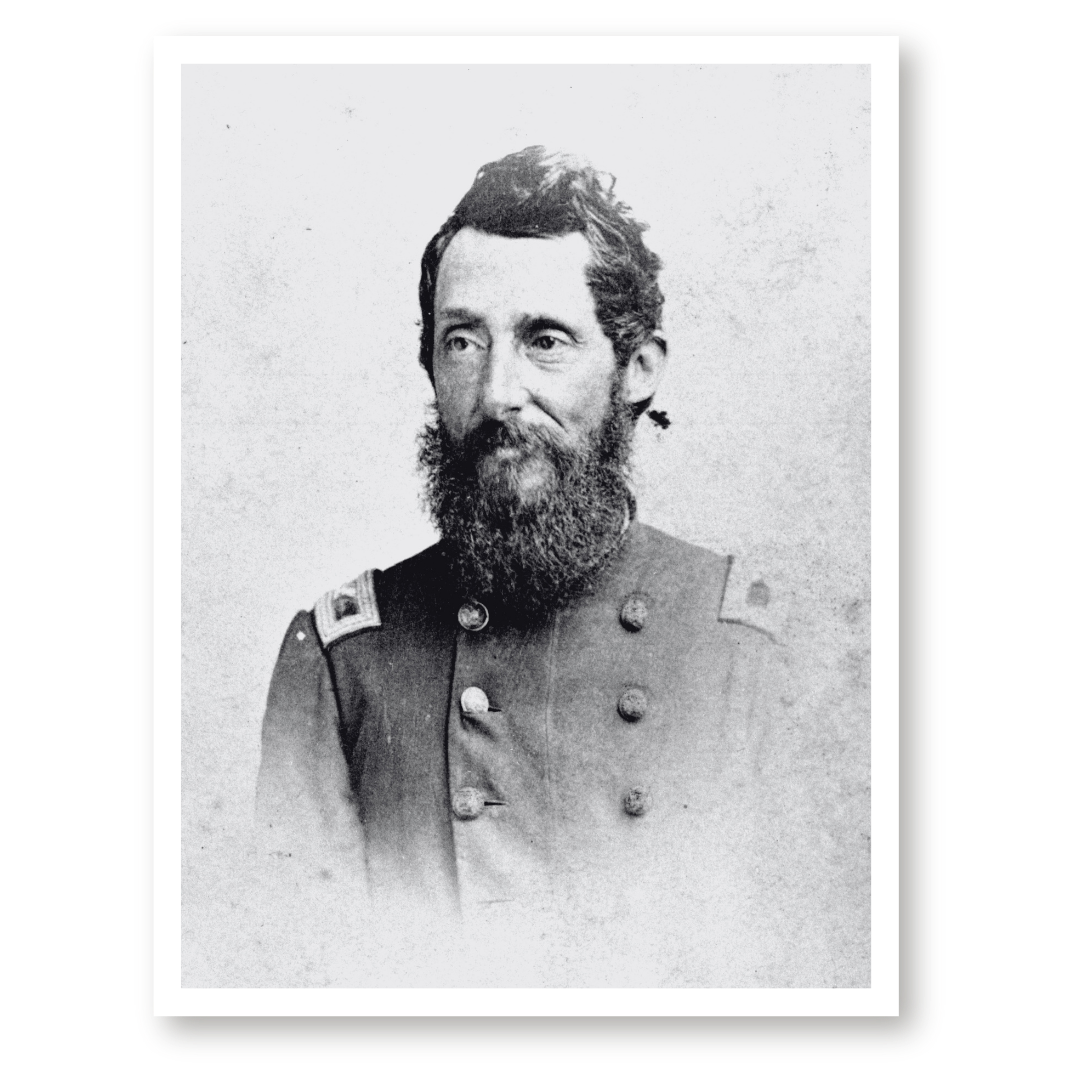
Established in 1867, along the banks of the Concho River, Fort Concho was built to protect frontier settlements, patrol and map the vast West Texas region, and quell hostile threats in the area. Constructed for the most part of native limestone, Fort Concho consisted of at least forty buildings and covered more than 1600 acres.
Fort Concho served as regimental headquarters for some of the most famous frontier units like the 4th and 10th Cavalry. Notable military commanders such as Ranald Mackenzie, Benjamin Grierson, and William ‘Pecos Bill’ Shafter commanded here. Elements of all four regiments of the Buffalo Soldiers were stationed at the post during its active period. At full strength Fort Concho supported 400-500 men made up of companies of infantry and troops of cavalry, staff officers and support personnel.
In June 1889 the last soldiers marched away from Fort Concho and the fort was deactivated. After almost twenty-two years Fort Concho’s role in the settling of the Texas frontier was over. Today, Fort Concho National Historic Landmark encompasses most of the former army post and includes twenty-four original and restored fort structures. The old frontier army post is now a historic preservation project and museum which is owned and operated by the City of San Angelo, Texas.

The Buffalo Soldiers at Fort Concho, 1869-1885
Created by an Act of Congress in 1866, the all-black regiments of infantry and cavalry represented a noted advance by African Americans in the post-Civil War nation. Blacks had served in all American armies since the Revolutionary War, but these new units represented the first service in the nation’s “regular” peacetime military. At Fort Concho they served for most of this site’s active history and over time represented exactly half of the soldiers who were assigned to this post.
The “buffalo soldier” nickname stems from the warriors of the Great Plains who equated the black troops’ courage and dark matted hairstyle to that of their sacred buffalo. Thus, this compliment grew stronger and more prevalent after the Indian Wars era and is often used to describe any black troops of the 1866-1951 era when they served in these segregated units. Most of the officers were white, but several notable African American officers served in these units including Lt. Henry O. Flipper, the first black to graduate from the military academy at West Point. Flipper served at Fort Concho in 1880 before his transfer to Fort Davis.
This section of our web site will feature historic photos, articles, and illustrations of some original artifacts in our collection that relate to Buffalo Soldiers of Fort Concho and many other forts across the west. By and large, the men of the 24th and 25th Infantry Regiments and the 9th and 10th Cavalry Regiments served with distinction at this post and others west of the Mississippi. Fort Concho had units from all four regiments, and it served as the regimental headquarters for the 10th Cavalry between 1875 and 1882.
Fort Concho, through its library/archives and collections cares for a wealth of resources that illustrate the life and times of these troops. Equally important and quite visible, the site’s twenty original and re-constructed buildings stand as a permanent tribute to their good service a century and a half ago.
Buffalo Soldier Units that served at Fort Concho by company
compiled by Matt Taylor from Post Returns (microfilm roll 21/22)
9th Cavalry
Company A May 1873 – Dec 1874
Company B March 1869 – July 1870
Company C June 1871 – Feb 1872
Company D Feb 1874 – Dec 1874
Company E March 1869 – June 1870
April 1873 – Dec 1874
Company F Feb 1874 – Dec 1874
Company K March 1874 – Dec 1874
Company M July 1872 – Oct 1872
10th Cavalry
Company A May 1873 – Jan 1878
July 1880 – Nov 1880
Company D May 1875 – July 1882
Company E Aug 1879 – March 1885
Company F May 1873 – March 1874
April 1875 – Aug 1877
April 1878 – March 1885
Company G Feb 1875 – Aug 1876
July 1880 – Nov 1880
June 1881 – Dec 1881
Company I Jan 1875 – Aug 1876
July 1880 – Nov 1880
Company L Jan 1875 – July 1878
June 1881 – Dec 1881
Company M Feb 1878 – July 1882
24th Infantry
Company D Oct 1876 – Aug 1877
Company E Aug 1874 – March 1875
Company F Nov 1869 – June 1870
Company G July 1880 – Dec 1880
Company K Aug 1874 – March 1875
July 1880 – Dec 1880
25th Infantry
Company A Aug 1878 – Aug 1880
Company G March 1877 – Aug 1880
Company K Feb 1878 – July 1880
38th Infantry
Company F Nov 1869 – Dec 1860
41st Infantry
Company F March 1869 – Dec 1869
To learn more information about the Buffalo Soldier, click on the images below.
